Sight Words Teaching Resources
Teach sight words and high-frequency words this year with printable worksheets, digital reading center activities, games and more teaching resources designed for elementary teachers and your students.
This curriculum-aligned resource collection was created by teachers for teachers like you to save you time on your lesson plans with editable options to help with the differentiation of instruction for your learners. Explore curriculum-aligned sight word lists, decodable text worksheets and more!
New to teaching this part of the ELA curriculum or just looking for fresh ideas to engage your learners? Read on for a primer from our teacher team!
What Are Sight Words?
By definition, sight words are words that kids are taught to recognize by sight rather than learning to sound them out phonetically.
The thought is that these types of words are used so frequently in written language that it becomes more efficient for children to learn to recognize them automatically than teaching students to sound them out every time they encounter them.
Why Are Sight Words Important?
Also known as "high-frequency words," recognition of these words is essential for building a strong foundation in comprehension and reading fluency.
Here are just a few of the reasons we teach sight words!
- It Helps Build Reading Fluency — Even though sight words appear at a high frequency in language, they often don't follow phonetic rules, which can make them difficult for early readers to sound out. By teaching students to recognize them on sight, we give kids the skills they need to decode these words quickly and accurately, which helps to build reading fluency.
- It Improves Reading Comprehension — When students can read sight words automatically, it frees up their mental energy to understand the overall meaning of the text. In turn, this improves their reading comprehension and helps them make connections between different parts of a text.
- It Helps Writing Development — We call them high-frequency words because they frequently appear in writing ... and that doesn't just mean the texts our students are reading. It also applies to their own writing! By teaching sight words, students can develop their writing skills and expand their vocabulary.
- Kids Get a Confidence Boost — Struggling to read commonly occurring words can be frustrating, especially when those words don't follow the "rules" of the English language. When kids can read their sight words with ease, it can boost their confidence and motivate them to continue to develop their literacy skills.
Sight Word Examples
In the primary grades, sight word lists typically include short words of no more than a few letters. These lists include articles, pronouns and other words that will appear in most written texts.
The exact words on sight word lists will vary depending on the school district, but there are generally around 250 to 300 sight words in total learned in the primary grades.
Some examples of the types of words on primary lists include:
- the
- and
- he
- she
- said
- is
- was
- am
- are
- to
- do
- in
- out
- up
- down
- of
- for
- on
- off
- with
As students get older, their sight word lists naturally get more complex. They'll start to learn words with multiple meanings or more specific content-related vocabulary.
Fun Sight Word Activities
Browse this whole collection for fun games and activities to get kids hooked on learning new words, and check out some favorites from our teacher team below!
Let Students Write on Their Desks
What’s more fun for kids than the ability to write on the desk?
Use a window marker to write sight words on the desk (don’t worry, the writing comes off easily with a damp wipe). Have students pick three or four sight word flashcards suitable to their level, then have them copy each of the sight words on their desk.

Sand or Rice Writing
Fill a tray with sand or rice in a tray, have students pick sight word flashcards, then write that word in the sand or rice.
Place a sheet of colored paper on the bottom of the tray for a more visually appealing activity.
Scratch Paper Fun
Black paper that can be “scratched” to reveal rainbow-colored designs isn’t just good for art class. Encourage your students to write each sight word on scratch paper to create a colorful list of sight words.
Magic Sight Words Activity
Using a white crayon, write some tricky sight words on a white piece of paper. Children then use watercolor paint to discover their magic words. Can they work out what the magic sight words are? Challenge students by writing a secret sight word message for them to discover!

Sight Word Paper Cup Tower Building
Using paper cups, stick sight words to each cup using a glue stick. Children must correctly say the word on each cup before placing it on their "sight word tower." Challenge your students to find out who can correctly say all the words and create the tallest tower!

Bonus: This sight word activity also helps them build those engineering skills.
Play Dough Sight Word "Writing"
Who doesn't love to play with play dough? Using sight word flashcards, have students pick a word, then create it using play dough. You can also print the sight word cards and send them home for parents to practice sight words at home with their children.
Mess-Free Paint Writing
Put some paint or cheap hair gel in a plastic zip-lock bag, have your students pick sight words, and then use a cotton swab or their finger to write the sight word! Easy-peasy lemon squeezy.
- Plus Plan
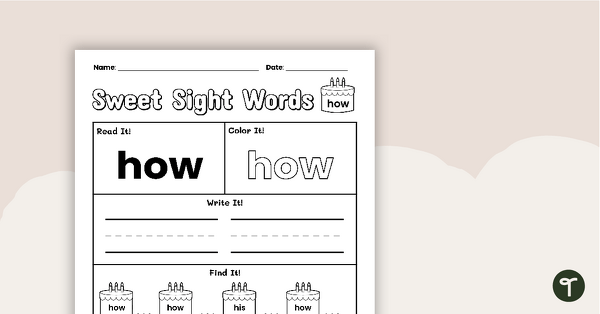
Sweet Sight Words Worksheet - HOW
Practice reading, writing, and identifying the high-frequency word “how” from the First Grade Dolch sight words list.
- Plus Plan
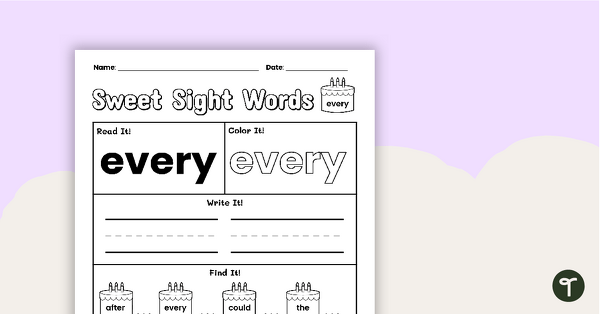
Sweet Sight Words Worksheet - EVERY
Practice reading, writing, and identifying the high-frequency word “every” from the First Grade Dolch sight words list.
- Plus Plan
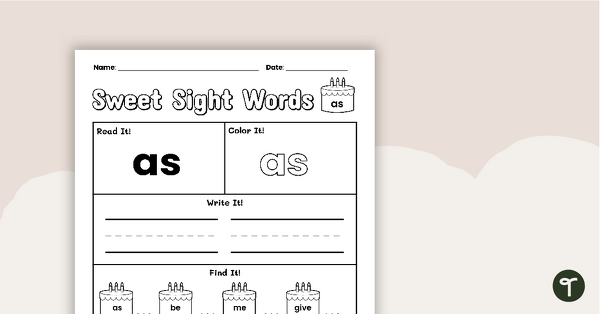
Sweet Sight Words Worksheet - AS
Practice reading, writing, and identifying the high-frequency word “as” from the First Grade Dolch sight words list.
- Plus Plan

Sweet Sight Words Worksheet - AGAIN
Practice reading, writing, and identifying the high-frequency word “again” from the First Grade Dolch sight words list.
- Plus Plan
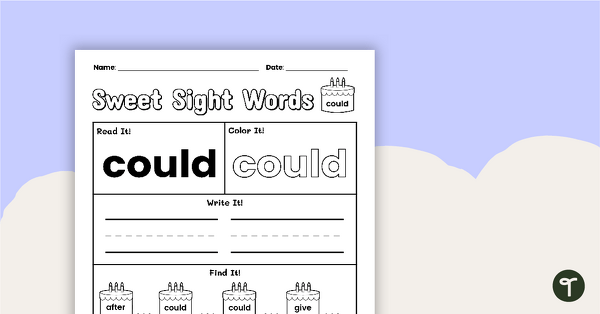
Sweet Sight Words Worksheet - COULD
Practice reading, writing, and identifying the high-frequency word “could” from the First Grade Dolch sight words list.
- Plus Plan
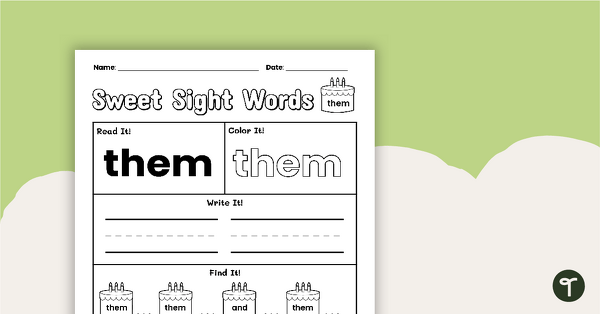
Sweet Sight Words Worksheet - THEM
Practice reading, writing, and identifying the high-frequency word “them” from the First Grade Dolch sight words list.
- Plus Plan
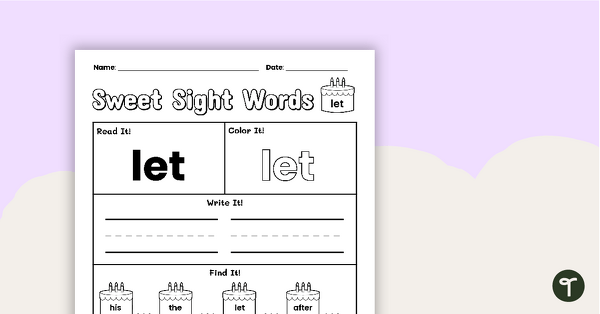
Sweet Sight Words Worksheet - LET
Practice reading, writing, and identifying the high-frequency word “let” from the First Grade Dolch sight words list.
- Plus Plan
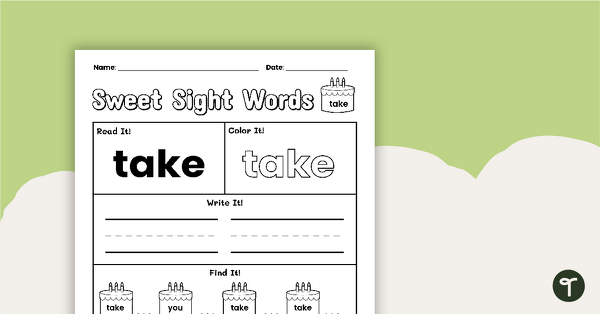
Sweet Sight Words Worksheet - TAKE
Practice reading, writing, and identifying the high-frequency word “take” from the First Grade Dolch sight words list.
- Plus Plan

Sweet Sight Words Worksheet - OPEN
Practice reading, writing, and identifying the high-frequency word “open” from the First Grade Dolch sight words list.
- Plus Plan
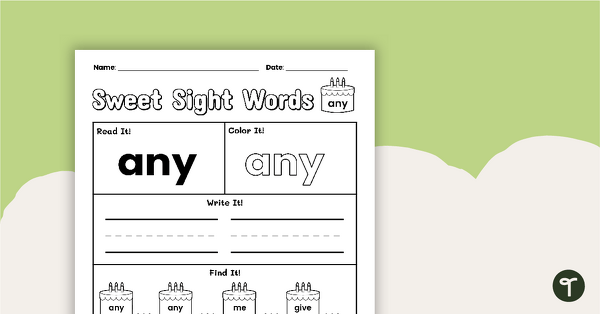
Sweet Sight Words Worksheet - ANY
Practice reading, writing, and identifying the high-frequency word “any” from the First Grade Dolch sight words list.
- Plus Plan
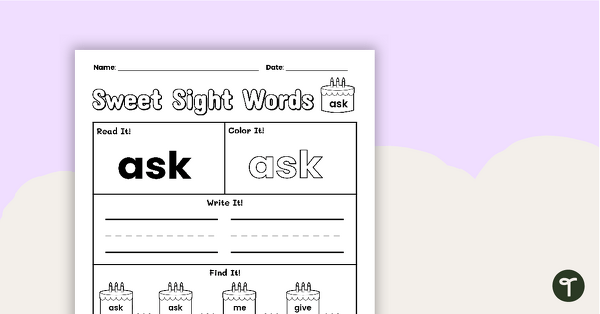
Sweet Sight Words Worksheet - ASK
Practice reading, writing, and identifying the high-frequency word “ask” from the First Grade Dolch sight words list.
- Plus Plan
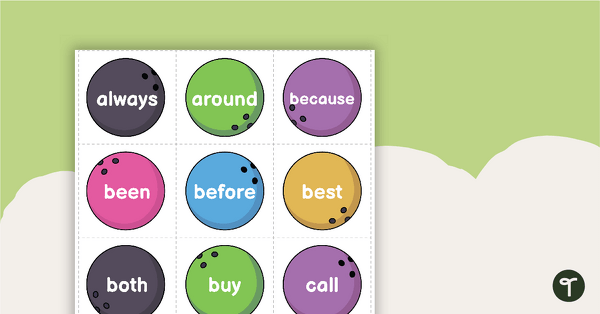
Bowling Game - Dolch Grade 2 Sight Words
Practice reading and matching 46 high-frequency words on the Dolch Second Grade sight words list.
- Plus Plan
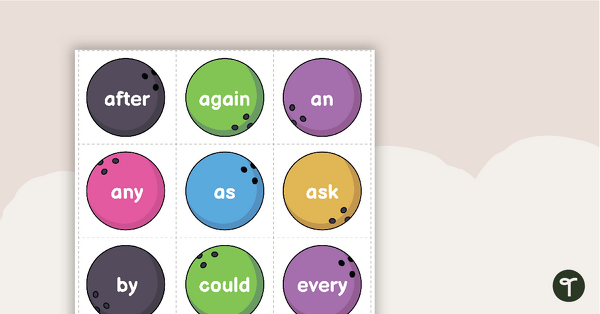
Bowling Game - Dolch First Grade Sight Words
Practice reading and matching 41 high-frequency words on the Dolch First Grade sight words list.
- Plus Plan
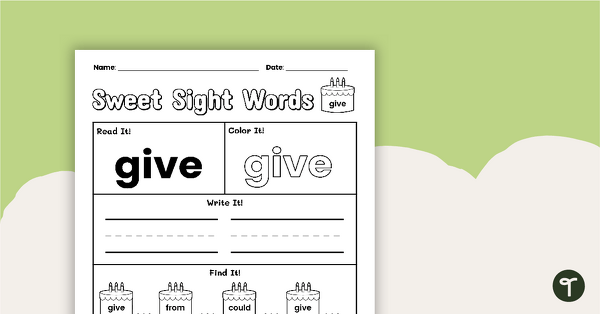
Sweet Sight Words Worksheet - GIVE
Practice reading, writing, and identifying the high-frequency word “give” from the First Grade Dolch sight words list.
- Plus Plan
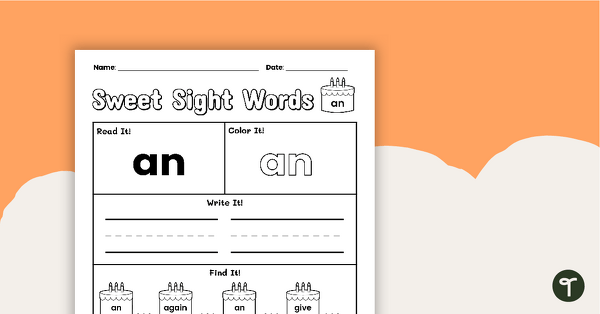
Sweet Sight Words Worksheet - AN
Practice reading, writing, and identifying the high-frequency word “an” from the First Grade Dolch sight words list.
- Plus Plan
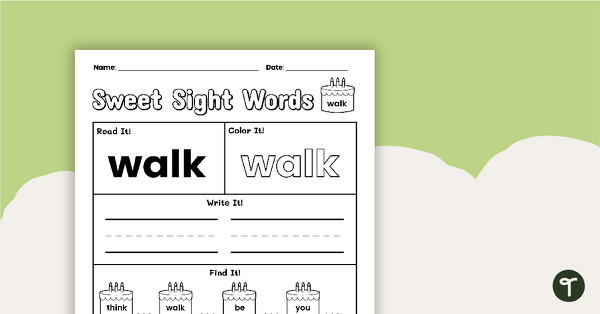
Sweet Sight Words Worksheet - WALK
Practice reading, writing, and identifying the high-frequency word “walk” from the First Grade Dolch sight words list.
- Plus Plan
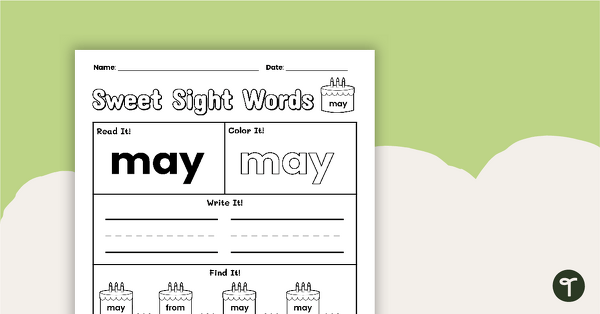
Sweet Sight Words Worksheet - MAY
Practice reading, writing, and identifying the high-frequency word “may” from the First Grade Dolch sight words list.
- Plus Plan
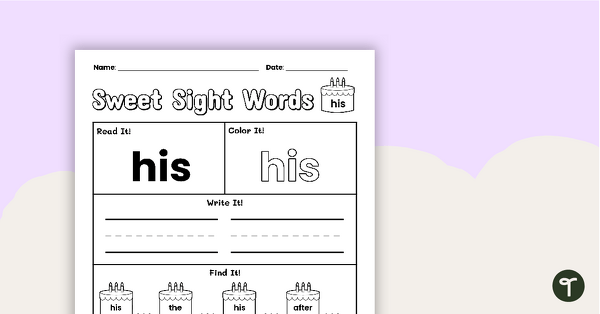
Sweet Sight Words Worksheet - HIS
Practice reading, writing, and identifying the high-frequency word “his” from the First Grade Dolch sight words list.
- Plus Plan
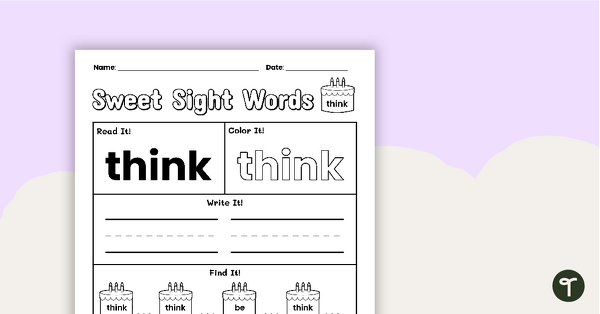
Sweet Sight Words Worksheet - THINK
Practice reading, writing, and identifying the high-frequency word “think” from the First Grade Dolch sight words list.
- Plus Plan
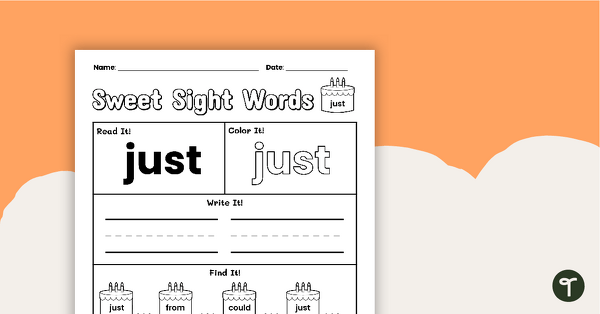
Sweet Sight Words Worksheet - JUST
Practice reading, writing, and identifying the high-frequency word “just” from the First Grade Dolch sight words list.
- Plus Plan
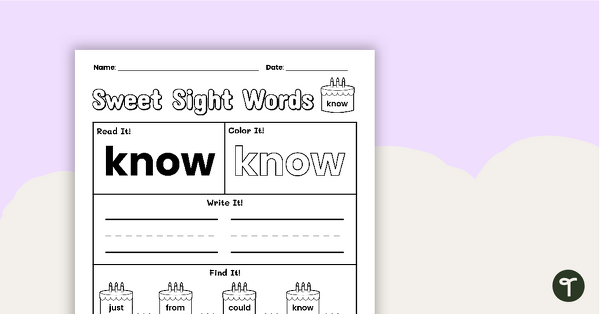
Sweet Sight Words Worksheet - KNOW
Practice reading, writing, and identifying the high-frequency word “know” from the First Grade Dolch sight words list.
- Plus Plan
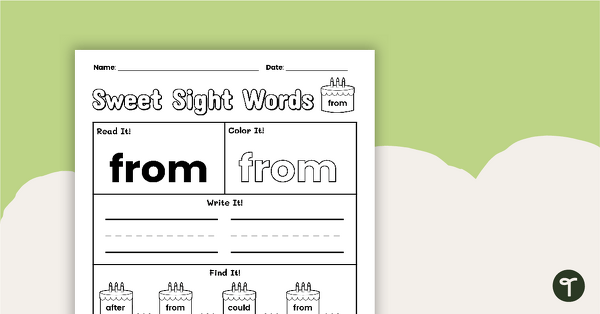
Sweet Sight Words Worksheet - FROM
Practice reading, writing, and identifying the high-frequency word “from” from the First Grade Dolch sight words list.
- Plus Plan
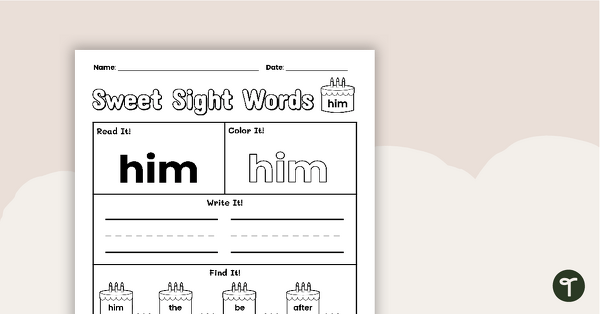
Sweet Sight Words Worksheet - HIM
Practice reading, writing, and identifying the high-frequency word “him” from the First Grade Dolch sight words list.
- Plus Plan

Sweet Sight Words Worksheet - HAS
Practice reading, writing, and identifying the high-frequency word “has” from the First Grade Dolch sight words list.
- Plus Plan
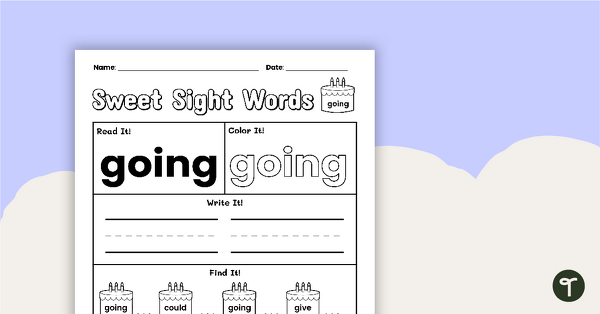
Sweet Sight Words Worksheet - GOING
Practice reading, writing, and identifying the high-frequency word “going” from the First Grade Dolch sight words list.
- Plus Plan
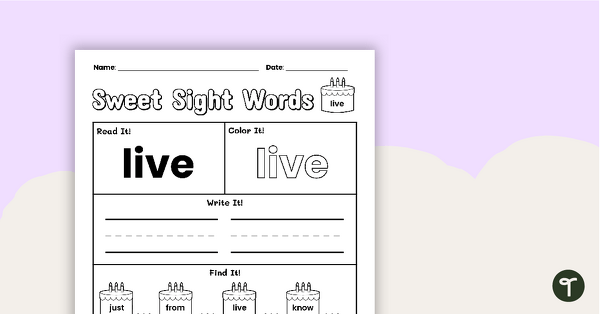
Sweet Sight Words Worksheet - LIVE
Practice reading, writing, and identifying the high-frequency word “live” from the First Grade Dolch sight words list.
- Plus Plan
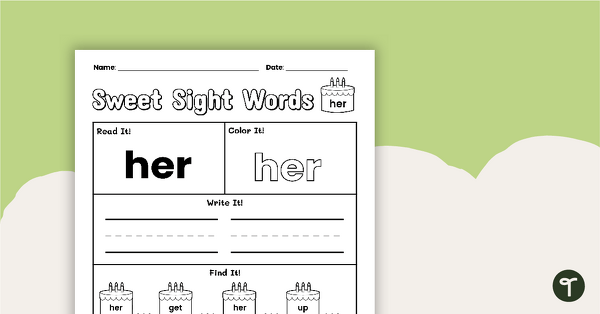
Sweet Sight Words Worksheet - HER
Practice reading, writing, and identifying the high-frequency word “her” from the First Grade Dolch sight words list.
- Plus Plan
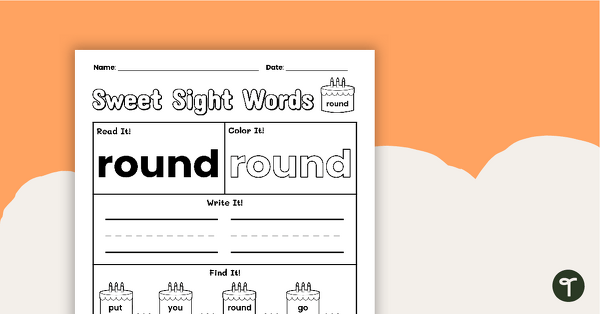
Sweet Sight Words Worksheet - ROUND
Practice reading, writing, and identifying the high-frequency word “round” from the First Grade Dolch sight words list.
- Plus Plan
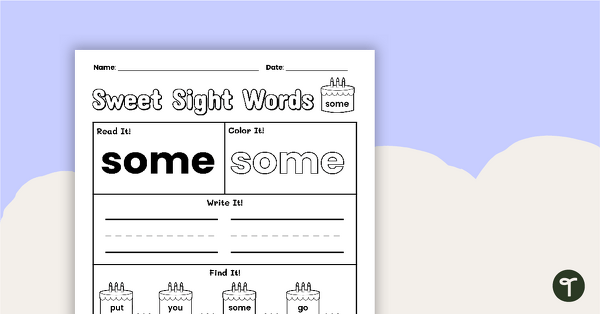
Sweet Sight Words Worksheet - SOME
Practice reading, writing, and identifying the high-frequency word “some” from the First Grade Dolch sight words list.
- Plus Plan
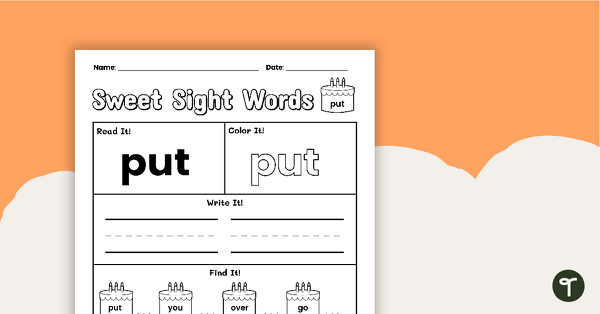
Sweet Sight Words Worksheet - PUT
Practice reading, writing, and identifying the high-frequency word “put” from the First Grade Dolch sight words list.
- Plus Plan

Bowling Game - Dolch Primer Sight Words
Practice reading and matching 52 high-frequency words on the Dolch Kindergarten sight words list.
- Plus Plan

Bowling Game - Dolch Pre-Primer Sight Words
Practice reading and matching 40 high-frequency words on the Dolch Pre-K sight words list.